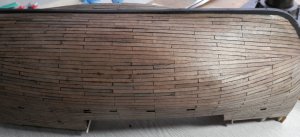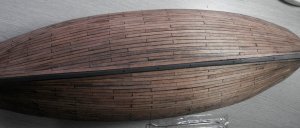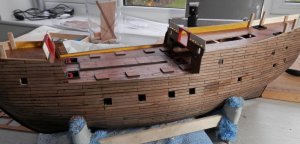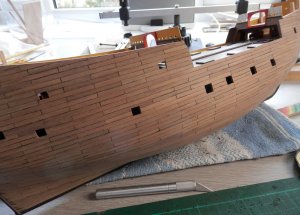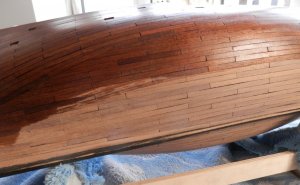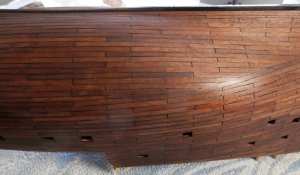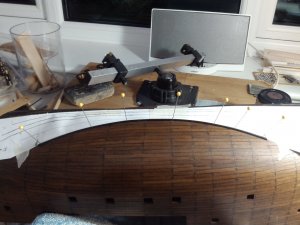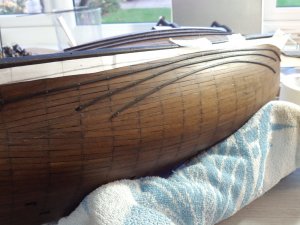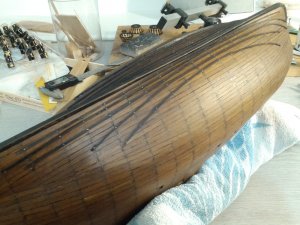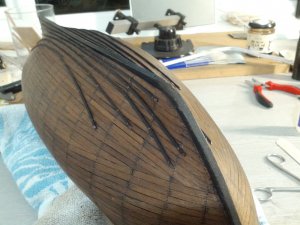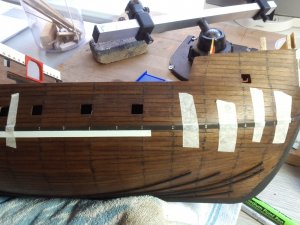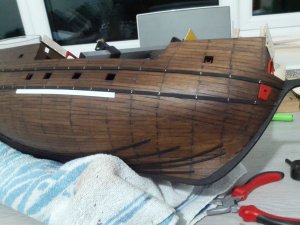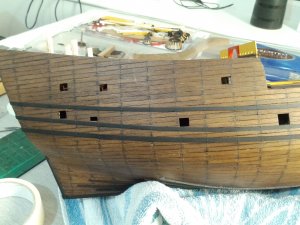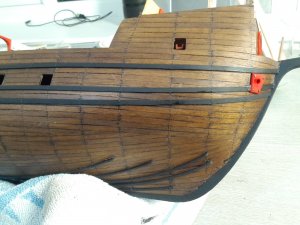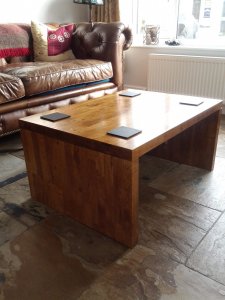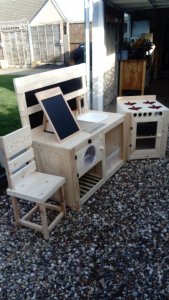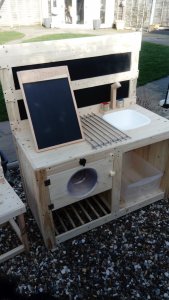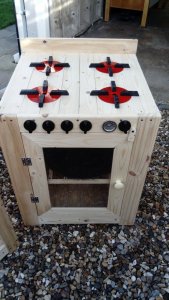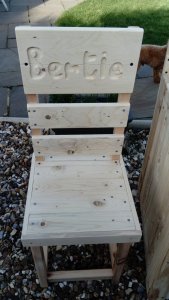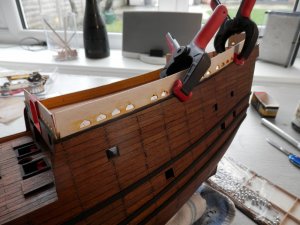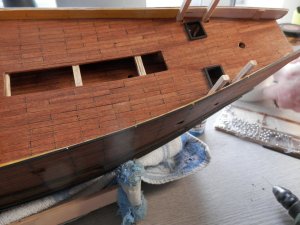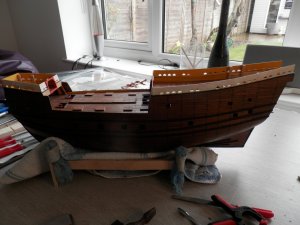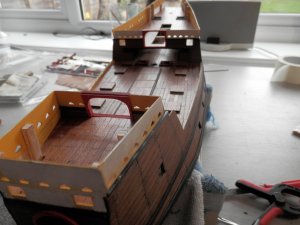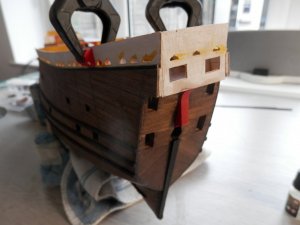Thanks for your comments, guys, much appreciated. I have put on a couple of coats of enamel lacquer and it is now time to do the treenails. There are a few methods to be found on this forum using filler or toothpicks and they look great. However, I will call on my furniture and French Polishing skills (?) and use wax. The process is -
1. Apply a couple of coats of lacquer. You can not wax fill bare wood as it gets in the grain and looks messy; a lacquer coat seals the grain.
2. Soften some wax by melting in a tin and adding a few drops of turpentine. This is trial and error until you get the softness you require i.e. malleable when warmed in your hand.
3.Mark the holes - I use a dental pick.
4.Drill the holes - depends on scale and I used a 0.6mm bit.
5.Fill holes using a blunt penknife.
6.Scrape off the excess.
Here it is as work in progress -
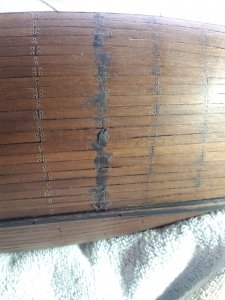
It is going well but it is mind-numbingly boring, so what I do is three or four 'strips' then take a break, do other tasks for a while, then get back to it. Here the fighting platforms or 'Crow's Nests' are coming together -
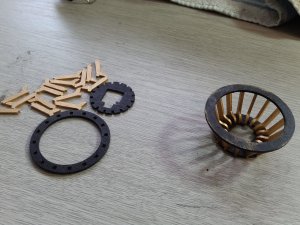
Treenails on the actual ship are of oak with shanks of 38mm and heads of 40mm. The outboard ends are made tight by caulked splits being either an arrow cut of two lines, a cross shaped cut or three cuts forming a triangle. There is no evidence of a wooden wedge being driven into the treenails to expand them and most were used as through fastenings where the cut off inboard ends have been found loose in the hull spaces.


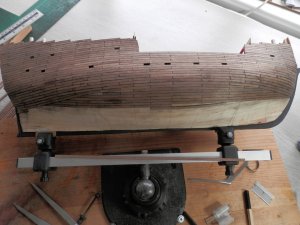
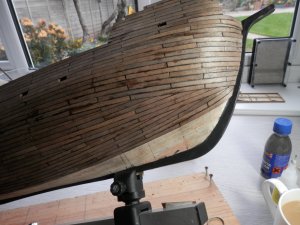
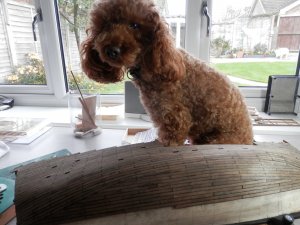
 helps get the job done.
helps get the job done.